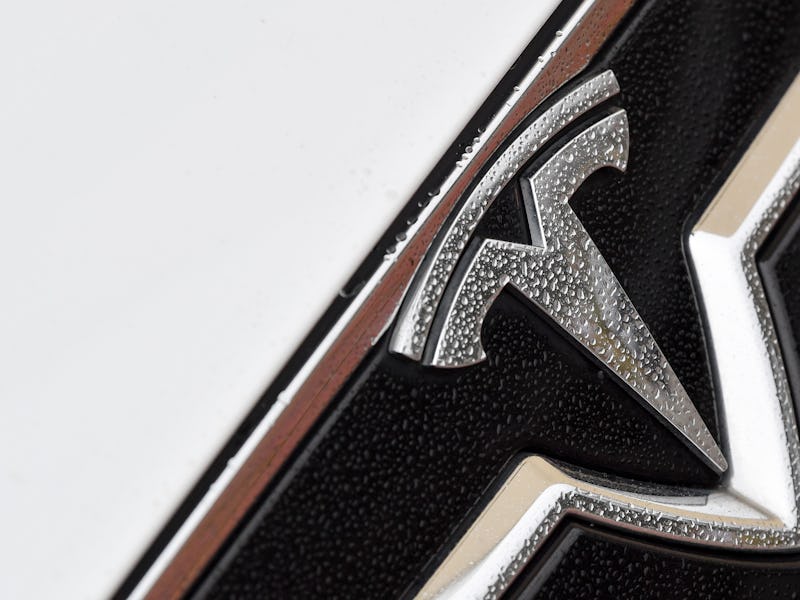Musk Reads: Tesla to build “most advanced paint shop”
The virtual power plant impresses and Musk explains a mystery camera. Can the Cybertruck meet towing needs?

The virtual power plant impresses and Musk explains a mystery camera. Can the Cybertruck meet towing needs? It’s Musk Reads: Tesla Edition #160.
A version of this article appeared in the “Musk Reads” newsletter. Sign up for free here.
Musk quote of the week
“Particulate matter from automotive exhausts has a much more serious impact on health than most people realize.”
- Read more about Musk’s latest comments and the research he’s referencing.
Tesla
Giga Berlin, the company’s under-construction plant, is set to offer “the world’s most advanced paint shop,” according to new details shared by Musk. The Tesla CEO revealed that the new facility in Germany, part of a plan to place a Gigafactory on every continent, will start by producing the Model Y compact SUV. The new paint shop will achieve “more layers of stunning colors that subtly change with curvature,” and it will also roll out to the Fremont and Shanghai factories in the future. Tesla applied for permission to start construction at the beginning of this month, which would pave the way for an official groundbreaking ceremony and the eventual start of production in 2021. Musk also confirmed this week that drone operators are free to fly over the construction site.
One vehicle that may not benefit from these paint boosts is the Cybertruck. When asked about color options for the pickup truck, set to debut in 2021, Musk responded that “you will be able to wrap [the Tesla Cybertruck] in any color or pattern.” Inverse contacted Tesla to clarify the comments, but it seems buyers will have to depend on third-party suppliers to change the color from cold steel. Dbrand, noted as the first to roll out its plans for Cybertruck skins, charges over $4,000 for a complete fitting in its upcoming kit – a notable increase over the $1,000 to $2,000 Tesla charges for paint upgrades during the Model 3 buying process. Read more.
Tesla solar
Tesla’s virtual power plant has been a success, CleanTechnica reported last week. The first phase of the South Australian project saw Tesla install solar panels and batteries on 1,000 low-income homes to reduce energy prices for the community. The Australian Energy Market Operator’s first review showed the system responded rapidly to events to plug the gap. The company is aiming to install panels on 50,000 homes in the area.
In other Musk news…
- Musk confirmed again this week that the camera inside Tesla vehicles is designed for the robo-taxi feature. Musk previously confirmed the camera’s function in April 2019.
- The robo-taxi feature is still “looking good” to launch this year from a functionality standpoint. Regulatory issues, Musk claimed, are “the big unknown.”
- More people are considering buying a car after experiencing the clean air during lockdown. A survey by British fleet management firm Venson Automotive Solutions found 45 percent were looking into buying an electric car. The team behind the survey told Electrek the questions focused on how the lockdown has changed people’s attitudes toward electric cars.
What’s next for Tesla: Tesla will host two major events this year: one focused on battery technology and the other on the planned Plaid powertrain. The company originally planned to host one event covering both topics, but Musk revealed this week that powertrain advancements will be discussed at a later date. Read more.
Musk Reads mailroom
William Richwine writes:
As Cybertruck is being developed, it is important to: 1) Have towing hitch and electronics onboard so trailer towing is simplified. Battery reserve capacity should be increased to allow 500 mile range on all models while towing. 2) Ensure the Cybertruck can be towed by a motorhome, either flat bedded in case of AWD Cybertruck or with one axle raised in rear wheel drive configuration.
This will be a major question for Cybertruck. It’s designed to drive more than 500 miles per charge for the high-end model, and it’s designed to tow over 14,000 pounds, but we don’t know how the range will dip in these situations. InsideEvs found that range can drop by as much as 50 percent when towing with a gas-powered pickup truck, so will Tesla see similar dips?
Gary Blokhuis writes:
I noticed that Tesla’s Autopilot can now detect and stop on red lights. Would it be possible to expand this to include school buses and or crosswalks as well? Too many children are hit and killed running out from in front of a school bus and likewise the same applies with school crosswalks. Not sure what kind of challenge this is but it would be worth it.
Tesla is likely to expand its full self-driving suite to cover these features and more. In terms of capability, Musk claimed this week that Tesla will be able to develop its autonomous robo-taxi service this year, even if legislation remains an issue. As the company aims for point-to-point autonomous driving without human intervention, it will need to solidly detect these obstacles and more if it wants to meet its goals.
Got any comments or queries? Don’t forget to send them over to muskreads@inverse.com.
Video of the week
Musk’s Cheetah launch mode goes hands-on.
Got a photo or video you’d like to see featured? Send it over to muskreads@inverse.com!
The ultra-fine print
This has been Musk Reads: Tesla Edition #160, the weekly rundown of essential reading about futurist and entrepreneur Elon Musk. I’m Mike Brown, an innovation journalist for Inverse.
- Email me directly at mike.brown@inverse.com and follow me on Twitter @mikearildbrown.
- Follow Inverse on Twitter @inversedotcom.
- Got any comments or queries? Don’t forget to send them over to muskreads@inverse.com.
A version of this article appeared in the “Musk Reads” newsletter. Sign up for free here.